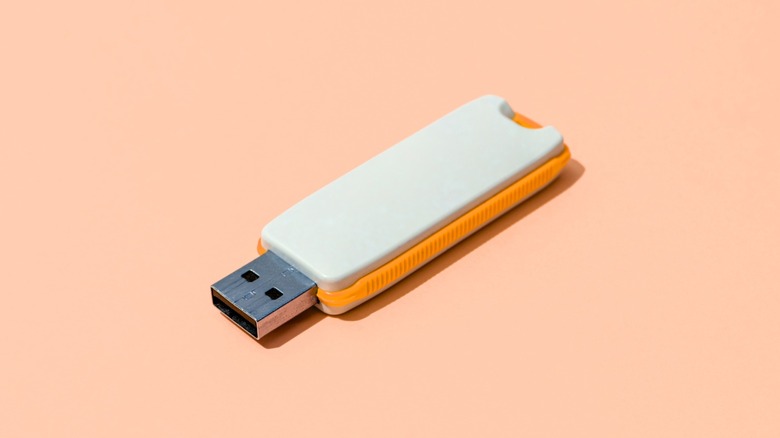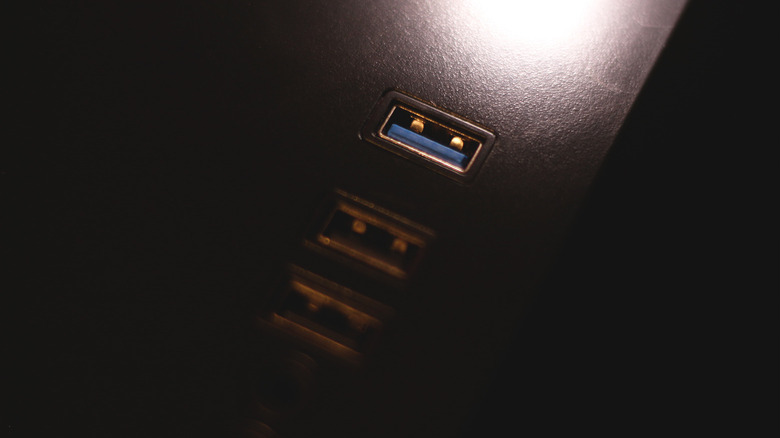What Are The 2 Square Holes In USB Connectors For?
We take a lot of technology for granted these days — the convenience of USB that we overlook is perhaps one of the best examples of this. The Universal Serial Bus standard was released by Intel in 1996, in collaboration with other organizations like IBM, Microsoft, and Compaq. Before USB was a thing, most connections to external accessories like printers, storage devices, and other computers required users to rely on an assortment of ports and cables.
Zoom past a quarter of a century, and nearly every smart electronic is powered by USB — either for charging or data transfer. There have been several generations of USB over the years, with the most modern being the compact and reversible USB Type-C connector. However, most still picture a full-sized Type-A port when they think about USB. If you've ever closely inspected one of these cables, you must have noticed two square holes on either side of the connector.
Though these don't directly facilitate the connection between a male and a female USB port, these holes are important for stability, thanks to the locking mechanism they house. It's a simple yet effective design feature in USB connectors that is easy to overlook but deserves recognition given its crucial role in ensuring a secure connection.
The clever design of USB connectors
If you capture an image of a USB female port using a macro lens, you will notice two spring-loaded retention clips that align perfectly with the two square holes on the USB connector. When you plug one in, the clips engage with the holes and snap into place. Though not all ports give an audible click, you might feel the connector being fully seated if you insert a USB cable slowly.
Once clicked into place, this locking mechanism is what prevents the connected device or cable from slipping out of the port. By ensuring that a USB connector needs intentional force to be unplugged, you won't have to worry about running into failed file transfers anytime you accidentally disturb the physical connection.
Without the locking mechanism of USB connectors, you would have to rely solely on gravity to make sure your connection isn't interrupted. This could work in theory for PC cases that have top-mounted USB ports, for example, but when dealing with other connections in different orientations, it would turn into a nightmare. This mechanism also helps with alignment. Being a passive locking method with no moving parts, it's a cheap and effective way to add durability and stability to USB ports and connectors.

